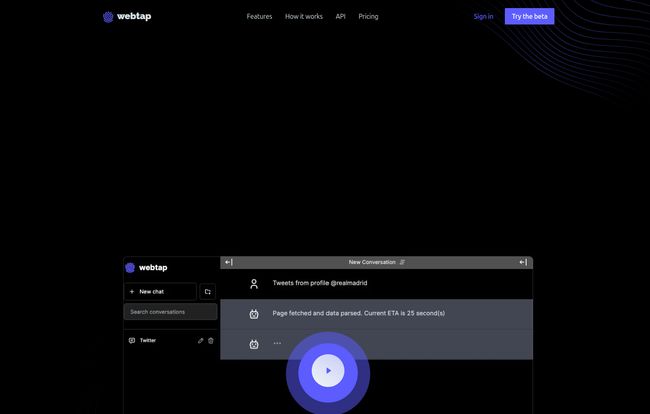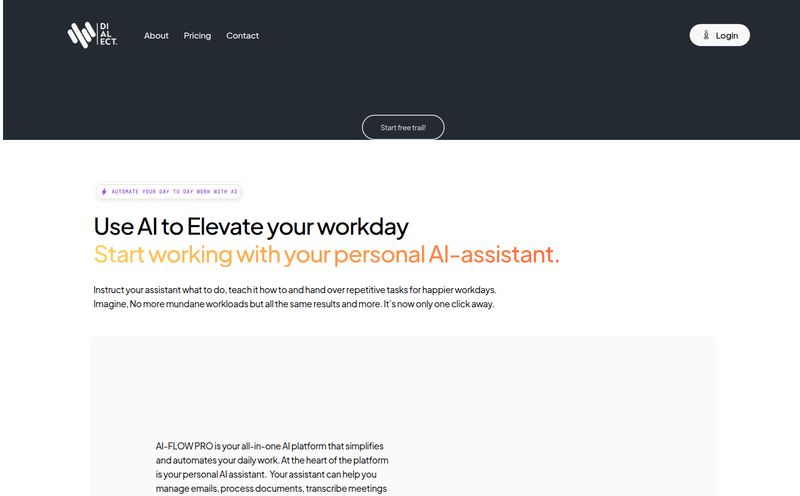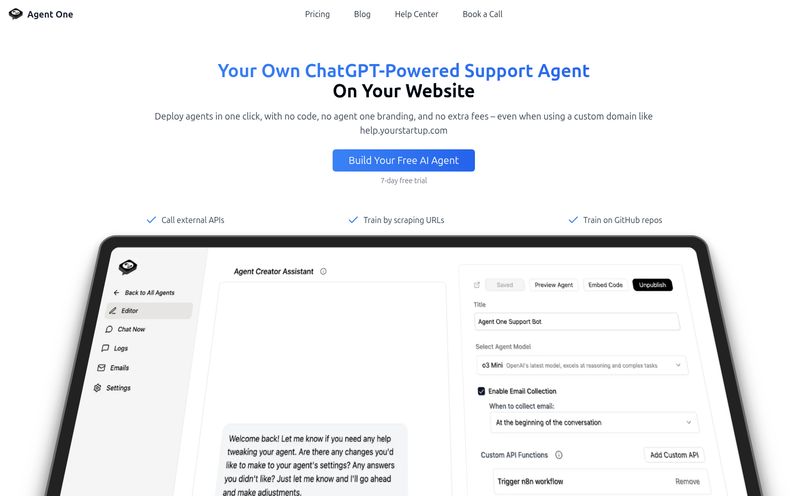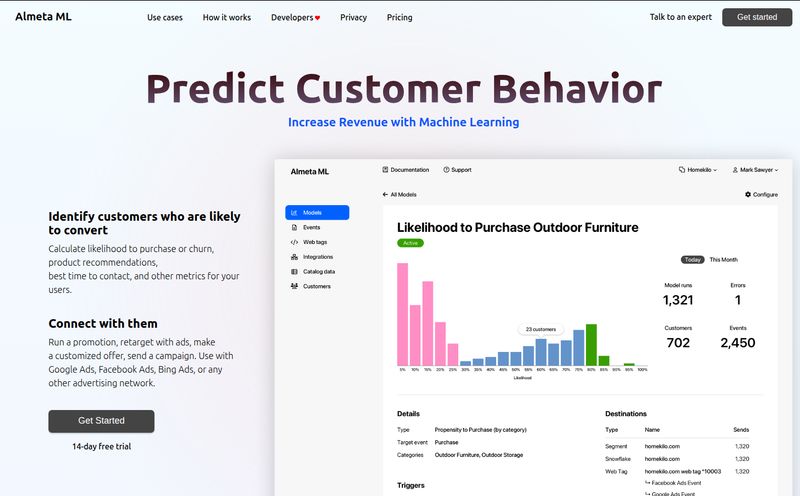Let’s have a little chat. If you’ve been in the SEO or digital marketing game for more than a few months, you’ve felt the pain. The mind-numbing, soul-crushing pain of trying to get data off a website. You start with a simple goal: "I just want to see my competitors' prices." Hours later, you're wrestling with IP blocks, baffling HTML structures, and CAPTCHAs that question your very humanity. I've been there. I have the gray hairs to prove it.
We've tried everything, haven't we? Clunky browser extensions that break every other Tuesday. Hiring a dev on Upwork who disappears after delivering a script that only works half the time. Or maybe, just maybe, you tried to learn Python yourself and ended up in a dark room crying over `requests` and `BeautifulSoup` documentation. Fun times.
But the winds are changing. AI is seeping into every corner of our industry, and data extraction is no exception. A new breed of tools is emerging, promising to do the heavy lifting for us. One of them that landed on my radar recently is Webtap.ai. The promise? Scrape any website just by telling it what you want in plain English. No code. No fuss. Sounds too good to be true, right? That’s what I thought, too. So I rolled up my sleeves to see if it’s all sizzle and no steak.
So, What Exactly is Webtap.ai?
Imagine you have a super-smart, incredibly fast research assistant. You don't need to give them a 10-page manual on how to use a web browser. You just say, "Hey, can you go to this website and grab all the product names and prices for me? Put them in a spreadsheet." And they just… do it.
That's the core idea behind Webtap.ai. It’s a web scraping platform that uses a natural language interface. Instead of writing code or clicking through a complex UI to map out data fields, you type your request into a chat box. It feels less like a tool and more like a conversation. It’s designed for marketers, founders, sales folks, and frankly, anyone who values their time and sanity more than learning the intricacies of XPath selectors.
The Experience: A Walkthrough of the Webtap Interface
My first impression upon logging in? Clean. The interface is a sleek, dark-mode chat window. No clutter, no confusing menus. It's just you, a text box, and the potential to get stuff done. It immediately lowers your blood pressure, which is a nice change of pace for a scraping tool.
To test it, I decided to try a simple, common task. I pointed it at a social media profile and typed something like, "Get the latest posts from this profile." The tool acknowledged my request, gave me an estimated time, and a little progress wheel started turning. A few seconds later, it came back with the data, parsed and ready.

Visit Webtap.ai
Now, the real magic isn’t just that it understood my request. The magic is what it claims to be doing behind the scenes. Webtap says its AI-powered crawlers are smart enough to navigate websites, handle logins, and even solve those pesky CAPTCHAs that are the bane of our existence. Even better, it's built to adapt when a website changes its layout—a problem that has broken countless custom scripts I’ve commissioned in the past. If it can consistently deliver on that promise, it's not just a tool; it's a miracle.
The Good Stuff: What I Really Liked
I've gotta say, there’s a lot to be optimistic about here. The biggest win is that the "no-code" dream is finally real for data extraction. This is huge. It completely democratizes a task that was once reserved for the technically gifted. The barrier to entry has been lowered from a multi-story building to a single step. The user-friendly chat interface is more than just a gimmick; it makes the whole process feel intuitive and, dare I say, almost pleasant. The AI automation humming in the background is the secret sauce—handling the dirty work of site changes and bot detection is a game-changer for anyone doing this at scale. And of course, getting your data out is straightforward with CSV and API options, which is a must-have.
Let's Be Real: The Not-So-Perfect Parts
Okay, it's not all sunshine and rainbows. No tool is perfect, especially a newer one. There are a few things you should be aware of. First, let's talk about the credit system. The FAQ mentions that one credit scrapes about one simple page. But what defines a "complex" page? A heavily JavaScript-rendered e-commerce category page could potentially chew through more credits, and that's something to keep an eye on for your budget.
Second, the "universal scraper" that can tackle any site is currently in beta. That's a good sign of what's to come, but it also means you might run into a website it can’t quite figure out just yet. They do claim to support 100+ popular sites out of the box, which covers a lot of ground, but it’s not omnipotent... yet. Lastly, this isn't a real-time, instantaneous data feed. The response times can vary depending on how busy teh servers are and the complexity of your request. You need to approach it with a little patience.
Who is Webtap.ai Actually For?
I can see a few groups of people getting seriously excited about this:
- Marketers and SEOs: Oh, the possibilities. Scraping SERPs for analysis, monitoring competitor backlinks, pulling social media data, or even gathering keyword ideas from forums. All without writing a line of code. Yes, please.
- Sales and Growth Teams: Building lead lists has never been easier. You could point it at a directory or professional network and say, "Get me the names, titles and companies from this list." It’s a massive time-saver.
- E-commerce Owners: This is a big one. Keep tabs on competitor pricing and stock levels automatically. You can't make smart pricing decisions in a vacuum, and this pulls back the curtain.
- Journalists and Researchers: Need to gather data for a story or a study? This lets you focus on the insights, not the mechanics of data collection.
A Quick Word on Webtap.ai Pricing
This is where things are a little bit of a black box at the moment. There isn't a public pricing page with clear-cut tiers, which is typical for a platform in beta or early stages. What we do know comes from their FAQ: the system is based on credits. As mentioned, one credit gets you a scrape of roughly one simple page.
For more complex jobs or to understand the cost at scale, your best bet is to sign up and likely engage with their support team. They do mention you can contact them in-app to acquire more credits. I actually prefer this to rigid tiers in some cases—it suggests they might work with you to create a plan that fits your specific needs.
How Does Webtap.ai Stack Up Against The Old Guard?
So, should you throw out your old tools like Octoparse or forget about learning Scrapy? Not necessarily. It's about the right tool for the right job. Think of it like a point-and-shoot camera versus a professional DSLR.
Traditional scrapers are like DSLRs. They give you immense granular control. You can fine-tune every little setting, handle bizarre edge cases, and build incredibly complex, powerful workflows. But the learning curve is a mountain. You need to be a pro to get pro results.
Webtap.ai is the high-end point-and-shoot. It makes most of the decisions for you, and 95% of the time, it's going to get you a fantastic result with almost zero effort. It prioritizes speed, ease of use and accessibility over infinite customization. For most business users, that's a trade-off they'll happily make every single day.
Frequently Asked Questions about Webtap.ai
How many pages can I scrape with Webtap.ai?
Webtap.ai doesn't impose daily scraping limits. The only constraint is the number of credits you have. Since one credit equals about one simple page, your scraping volume is directly tied to your credit balance.
What websites does Webtap.ai support?
They offer tailored support for over 100 popular websites. Additionally, they have a universal web scraper that aims to work on any site, though this feature is currently in beta. They are continuously adding new sites to their tailored list.
Can I request support for a site that isn't covered?
Yes, you can. If you need to scrape a site that isn't currently supported, the platform encourages you to sign up and contact their in-app support to discuss your use case and get started.
How does Webtap ensure data accuracy?
The platform uses an AI-powered scraping tool designed to maximize data quality and accuracy, which includes verifying results against multiple sources. However, as with any scraping tool, they wisely recommend validating the data yourself for critical applications.
Is it hard to use for someone with zero coding skills?
Not at all. That's its main selling point. If you can write an email or a text message, you have all the technical skills you need to use Webtap.ai.
What happens when I run out of credits?
According to their FAQ, you can contact their support team directly through the in-app chat to acquire more credits.
My Final Verdict
So, is Webtap.ai the future of web scraping? I think it's a huge leap in the right direction. It successfully abstracts away the most painful parts of data extraction and puts powerful capabilities into the hands of non-technical users. It’s not a magic wand that will solve every single data problem instantly—the beta features and credit model require some consideration.
But for the vast majority of marketing, sales, and research tasks, it represents a monumental shift in efficiency. It's a tool that lets you focus on the 'why' of your data, rather than the 'how'. And in a world where we're all drowning in tasks, that’s an incredibly valuable thing. It’s one I’ll be keeping a very close eye on.
Reference and Sources
- Webtap.ai Official Website
- Electronic Frontier Foundation (EFF) - Web Scraping FAQ and Legalities
- TechCrunch - The evolution of No-Code Platforms



